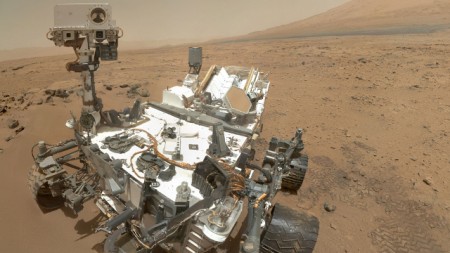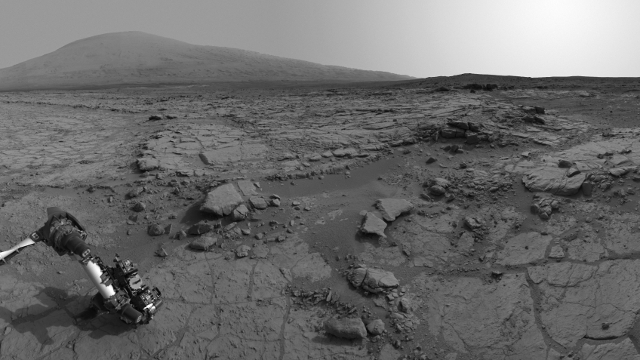More than two years after its precisely calibrated landing on the floor of a Martian crater in August 2012, NASA’s one ton, SUV-sized Curiosity rover has traveled more than five miles across the rocky, massive Gale crater to the base of an 18,000-foot mountain, Mount Sharp. The rover is the crowning achievement of the Mars Science Laboratory, a NASA mission managed by the Jet Propulsion Laboratory in Pasadena, California.

Nathalie Cabrol, a planetary scientist at the NASA Ames Research Center in Mountain View, California, called Curiosity “the Swiss Army knife” of Mars rovers. It’s an apt metaphor, considering that Curiosity is the most advanced scientific laboratory ever deployed on the Red Planet. Its suite of 11 scientific instruments, including cameras that are capable of capturing stunning high-definition photos of the Martian landscape, have already yielded more data than all previous Mars rover missions combined.
One of Curiosity’s biggest findings so far was announced last year, when scientists unveiled images taken by the rover of an ancient streambed, where gravelly rocks provided proof that water once flowed on Mars and could have actually supported life millions or billions of years ago.
Curiosity continues to make sophisticated measurements of the geological and chemical composition of Mars. In late September 2014, Curiosity drilled into the base of Mount Sharp and analyzed the sample to unearth clues about how the towering peak formed in the center of Gale crater.
After Curiosity drills into Martian rock, it probes the powdery sample with an x-ray beam. The diffraction or scattering of the x-rays reveal the sample’s structure and composition. The data is then relayed to an orbiting satellite and eventually reaches a team of NASA scientists who meticulously comb through the rover’s measurements and observations. Already, Curiosity’s data has revealed the presence of oxygen, water, carbon and sulfides – elements that are necessary to support life.

Although Curiosity cannot detect signs of current life on Mars, astrobiologists such as Christopher McKay of NASA Ames Research Center say they are excited to see Curiosity’s observations which are painting a fuller, more complex picture of the habitability of our closest planetary neighbor.